PROMOTION VIDEO
Overview of Strategic Port Development Master Plan
ABOUT
Why The Project Requested
Priority Issues in Infrastructure Development

The Government of the Democratic Republic of Timor-Leste recognized infrastructure development in the port sector as one of its priority issues in the Strategic Development Plan 2011-2030.
In the government program, it is stated that operational efficiency and regional port facilities will be improved, including the development of new regional ports, to ensure that maritime transport remains a viable option for transporting people and cargo, generating economic gains.
Risk of Disasters

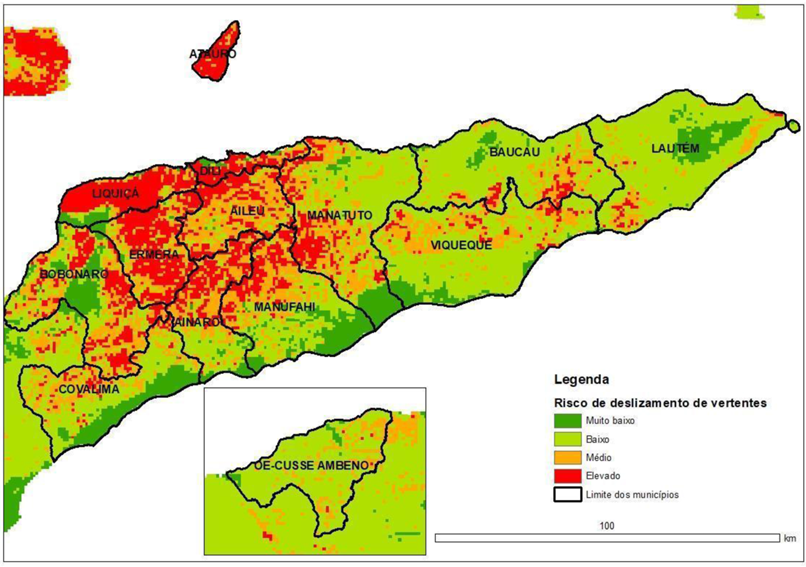
Timor-Leste is located in an area prone to heavy monsoon rains, steep terrain, extensive deforestation and low-lying urbanization, including steep slopes, increase the risk of flash floods and river floods. The risk of landslides increases during periods of high rainfall and road obstructions are caused by landslides due to heavy rain.
While the road network is under development, sea transport can be an indispensable infrastructure for public transport. However, ferry services to rural areas are currently operated only between Dili, Oecusse and Atauro. So, maritime traffic to other regions is not open.
Regional ports need to be developed at local terminals
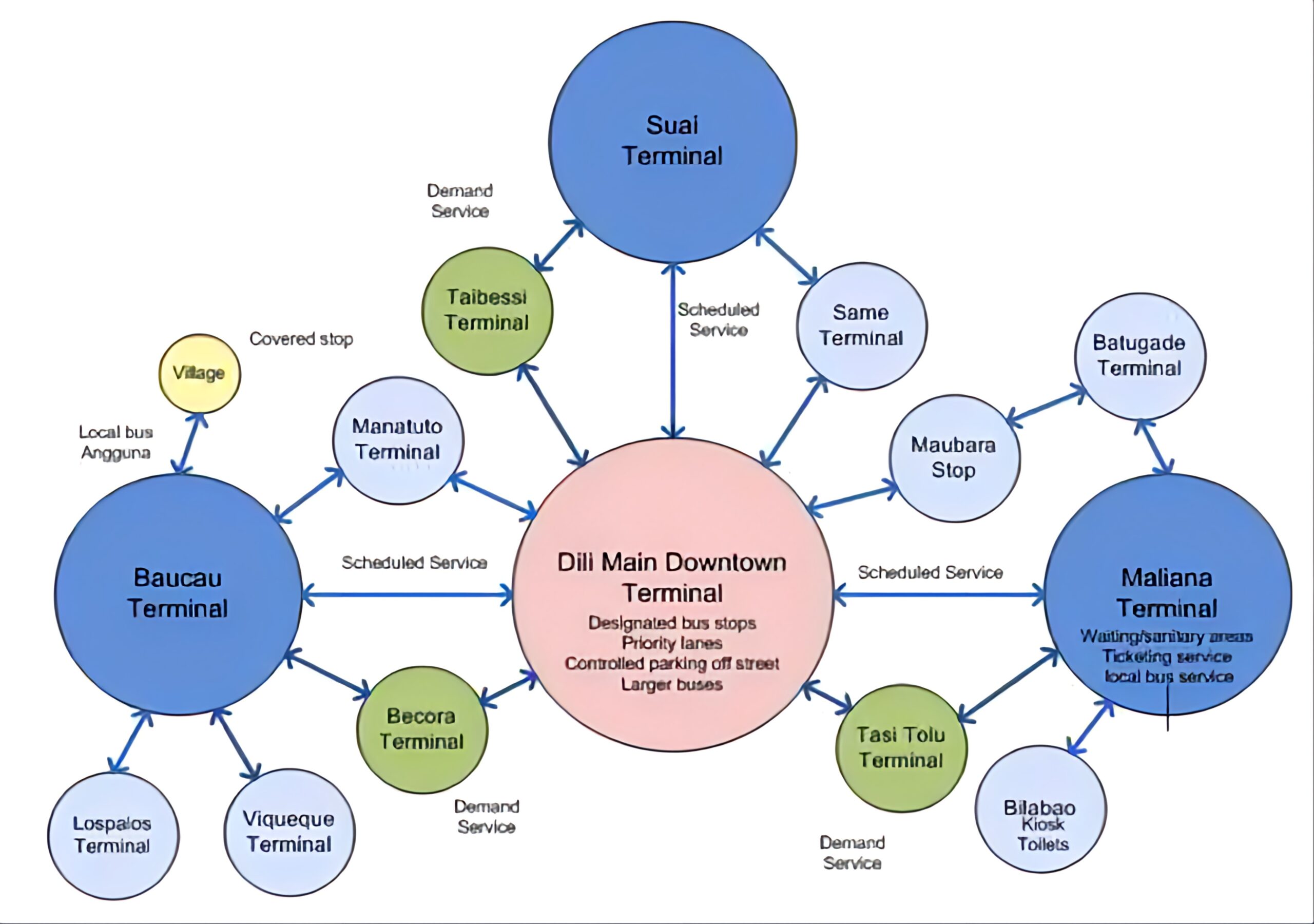
While no specific development plan for regional ports has been made due to restrictions on the government budget, it is required to formulate a development plan for the regional ports including consideration of future maritime transport networks for economic development and improvement of living standards of local residents, especially in rural areas.
APORTIL needs to be improved

Tibar Bay Port officially started its operation from November 2022, and all international cargo handling was transferred from Dili port. In view of this transfer, the redevelopment plan for Dili Port after the transfer of cargo handling has once completed, it has been cancelled and alternate plan is expected.
On the other hand, APORTIL, which operated Dili Port, needs to play a major role in realizing the marine network in Timor-Leste. However, this became difficult after container handling operations were diverted to Tibar Bay Port which significantly reduced APORTIL’s income. Although the reorganization plan of APORTIL becomes vital to solve the issues, it has not yet been considered.
Strategic Port Development Master Plan requested
In light of this situation and the need to formulate a strategic port development master plan, the Government of Timor-Leste requested Japan to implement a development planning in technical cooperation project and Record of Discussion on the contents of the investigation was signed in May 2022.
Expected Outcomes
1. National ports development plan (target year 2040)
2. Development plan for high priority ports (target year 2030 for Carabela port and 2035 for Beaco port)
3. Action plan for improvement of port operation and maintenance by APORTIL, I.P. (target year 2040)
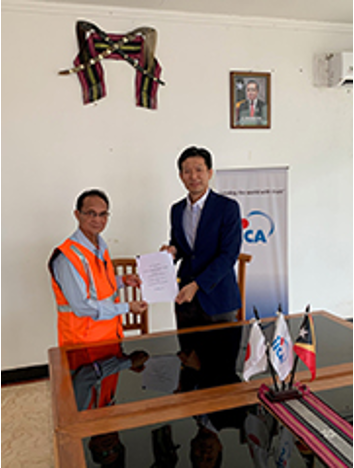
NEEDS STUDY
We discussed with Timorese People
Meeting of JCC (Joint Coordination Committee)
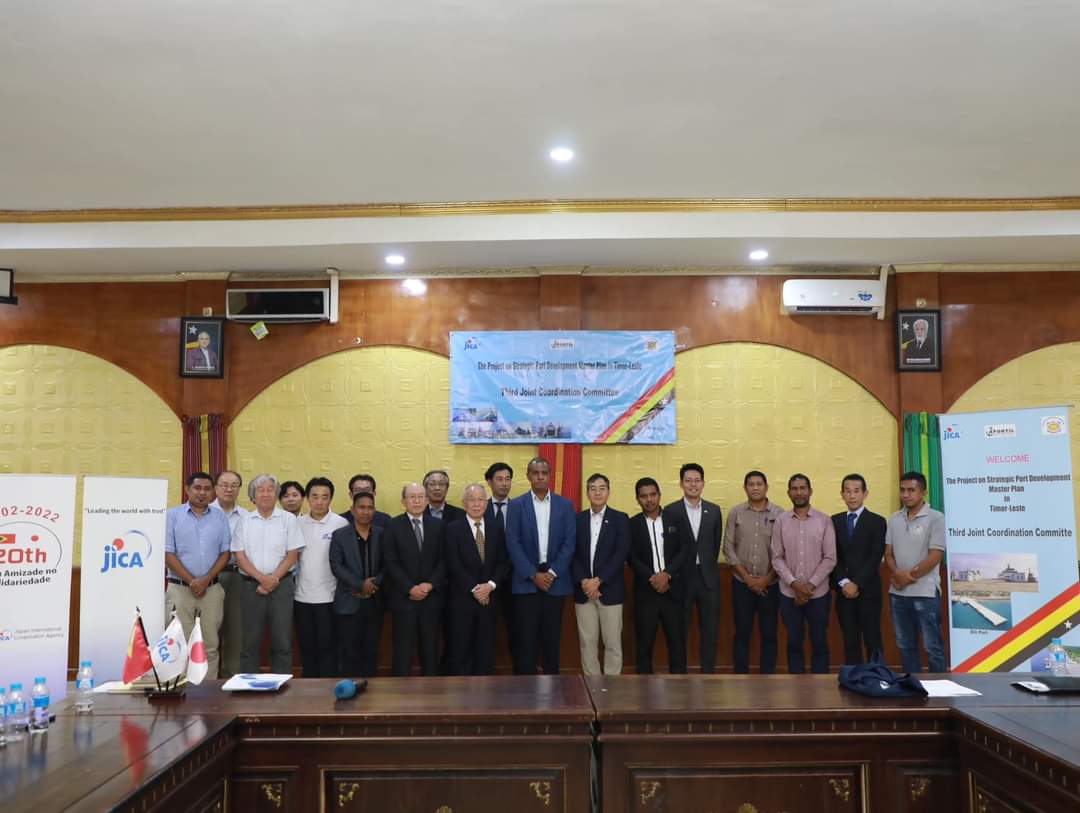
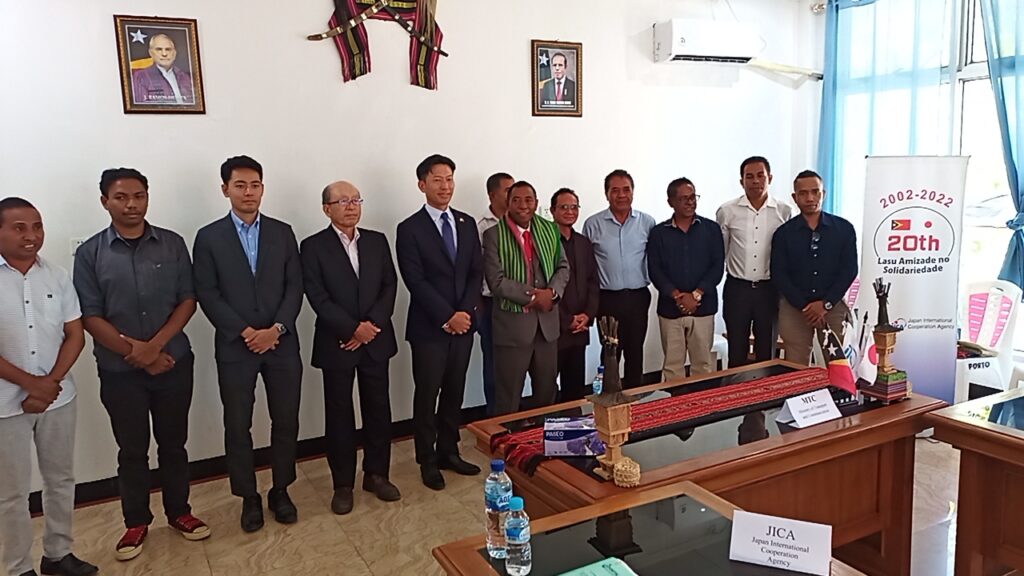
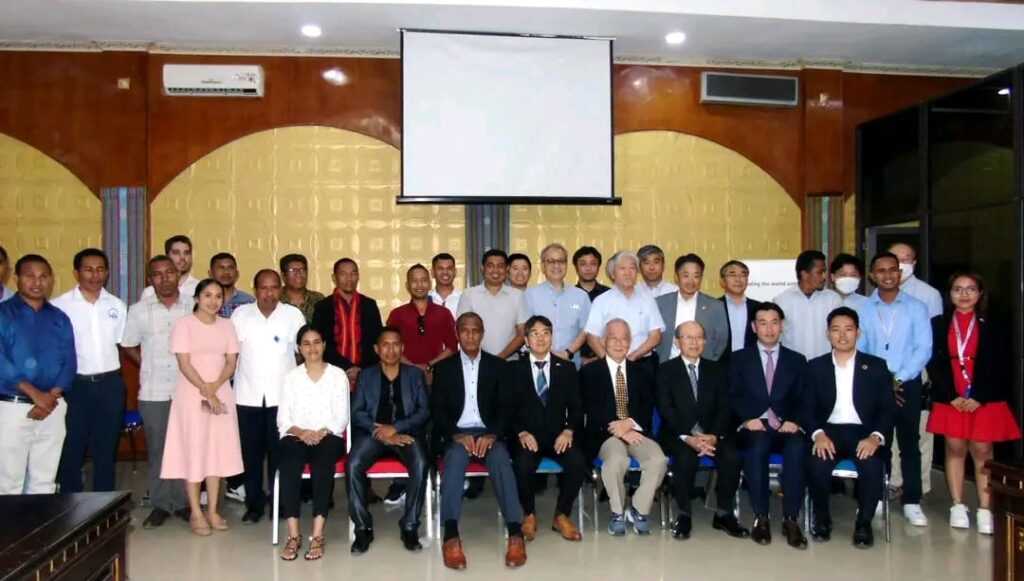
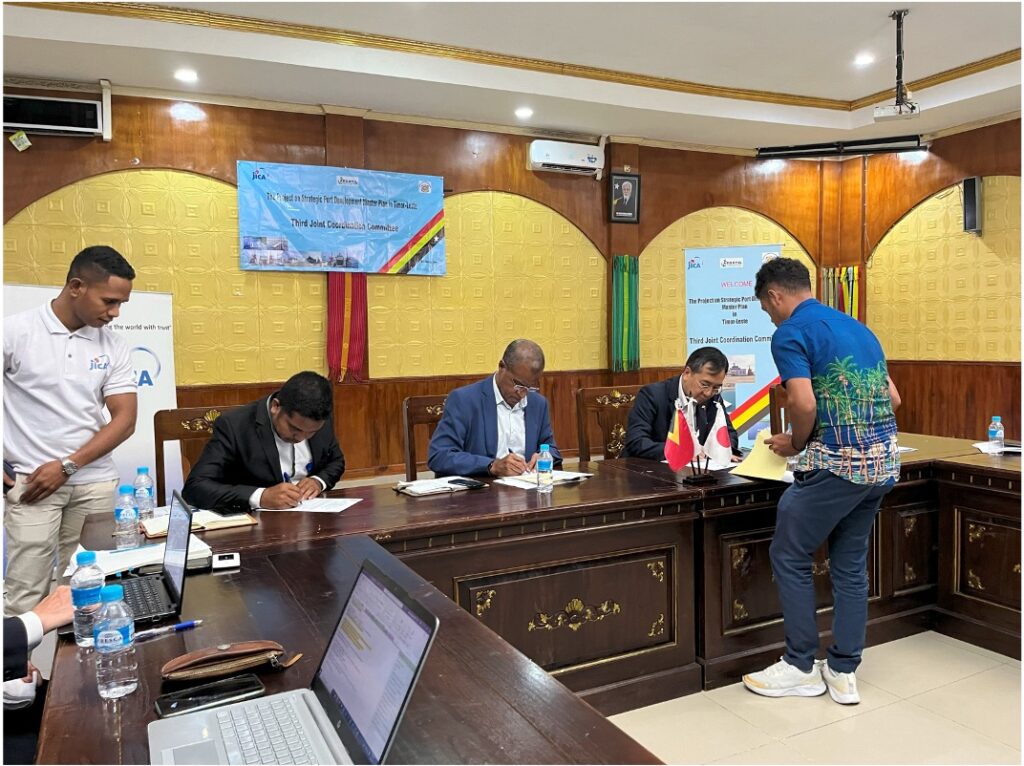
A Joint Coordinating Committee was established with the role of monitoring and approving the progress and plans of the entire project.
The JCC was held by the Counter Part and supported by JICA Experts.
Stakeholder Meetings

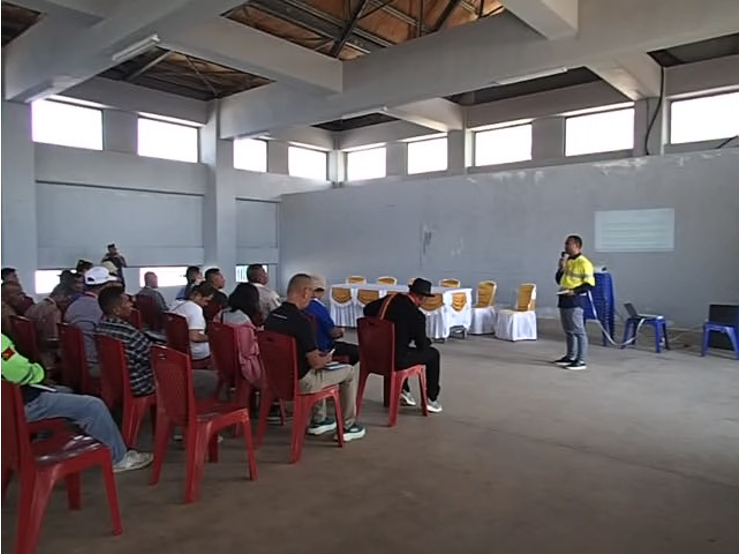
Stakeholder meetings were held after considering the regional characteristics, project scale and environmental permit category for the port to be developed.
In the meeting, APOLTIL explained various impacts related to the project implementation including land acquisition and resettlement, conflicts of interest in the area, cultural heritage and landscape.
Fruitful Interviews with the relevant organization and entities
Over 120 times of the interviews with the relevant organization and entities including the C/P (counterparts: MTC. APORTIL, DNTM, ANLA, and MPW) , Ministries (MAF, MSA, MPT, MOF, MPNR, etc.) , Timor-GAP, ZEESM, Timor Port, and logistic companies, etc. were conducted through the activities in Project.
FACT FINDINGS
We have learned the local characteristics
Dili port and Operational Regional Ports
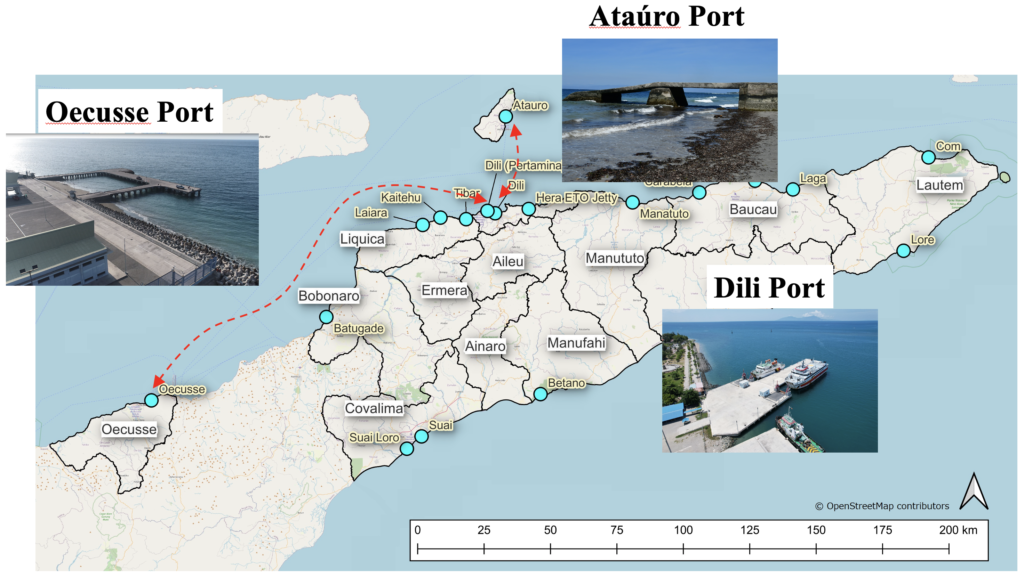
Currently, 2 regional ports are operational in Timor-Leste, namely Atauro and Oecusse. Ferry operation is 3 trips a week between Dili-Oecusse and twice a week between Dili-Atauro. BERLIN RAMELAU connects Dili-Oecusse and BERLIN NAKROMA connects Dili-Oecusse and Dili-Atauro.
Road Network : Steep, Winding and Deteriorated
Transport network of Timor-Leste is relying on the road network, but it is steep and winding and may be damaged by flood and land slide. In addition, cargo trucks weighing around 10 to 20 tons are used for land transportation, but there are some sections where they are not suitable for fully loaded trucks.
Road transport faces difficulties when landslides occur, therefore, it is essential to develop regional ports in order to secure transportation network.
Site Surveys gave rich information
Environmental Survey
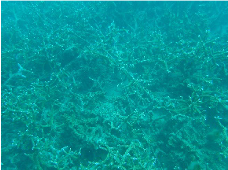
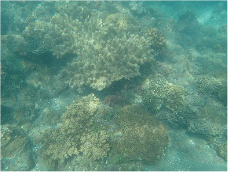
At Carabela Port
Scope of the survey works includes literature survey, ecosystem survey, water quality survey, sediment quality survey, air quality survey, noise survey and stakeholder meeting.
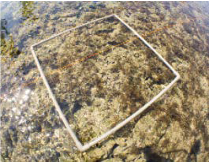
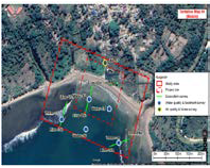
At Beaco Port
Environmental survey were conducted at 3 target sites to fulfil the requirement of environmental and social considerations to implement the port development.
Natural Condition Survey
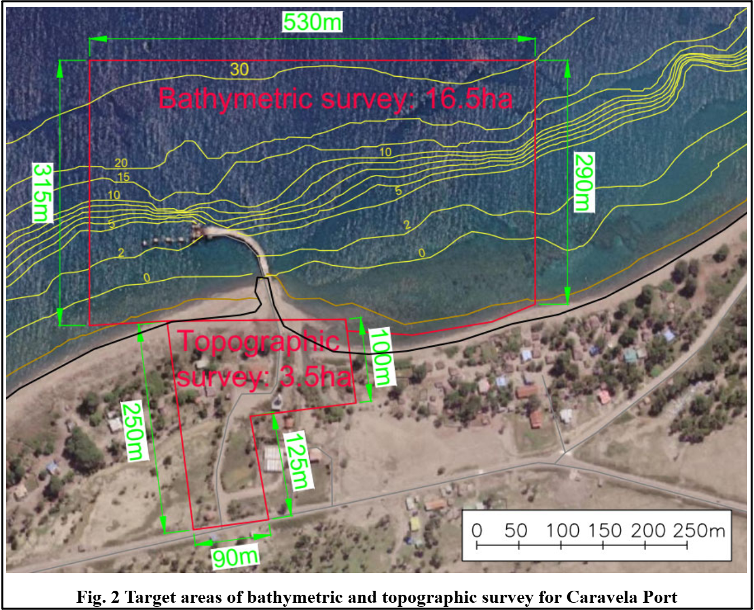
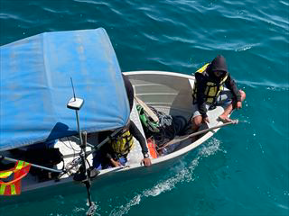
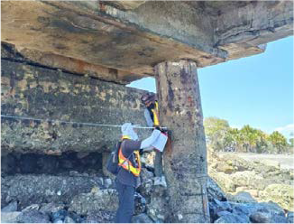
Based on the scale and proposed layout of the facilities required for the target ports of the high priority development ports namely Beaco, Carabela and Oecusse, natural condition survey were conducted to contribute to the schematic design and the calculation of estimated project costs.
The survey includes sounding, topographic survey, tide level observation and structural survey of the existing abandoned facility in Carabela.
ASSESSMENT AND ANALYSIS
We took a view of the future
Socioeconomic Framework
Population 1.67 million in 2040
Based on the 2015 population, the Statistics Bureau of the Ministry of Finance estimates the total population for the 35 years to 2050 assuming three growth rates: High, Medium and Low. The total population in 2015 was approximately 1.2 million, and the total population in 2040, 25 years from that year, is estimated to be 1.67 million in the medium case.
GDP US$3.05 billion in 2040
the MOF’s 2027 estimate of 3.5% is used as a base, and the growth rates are gradually reduced until 2040.
Cargo Demands

Road Network
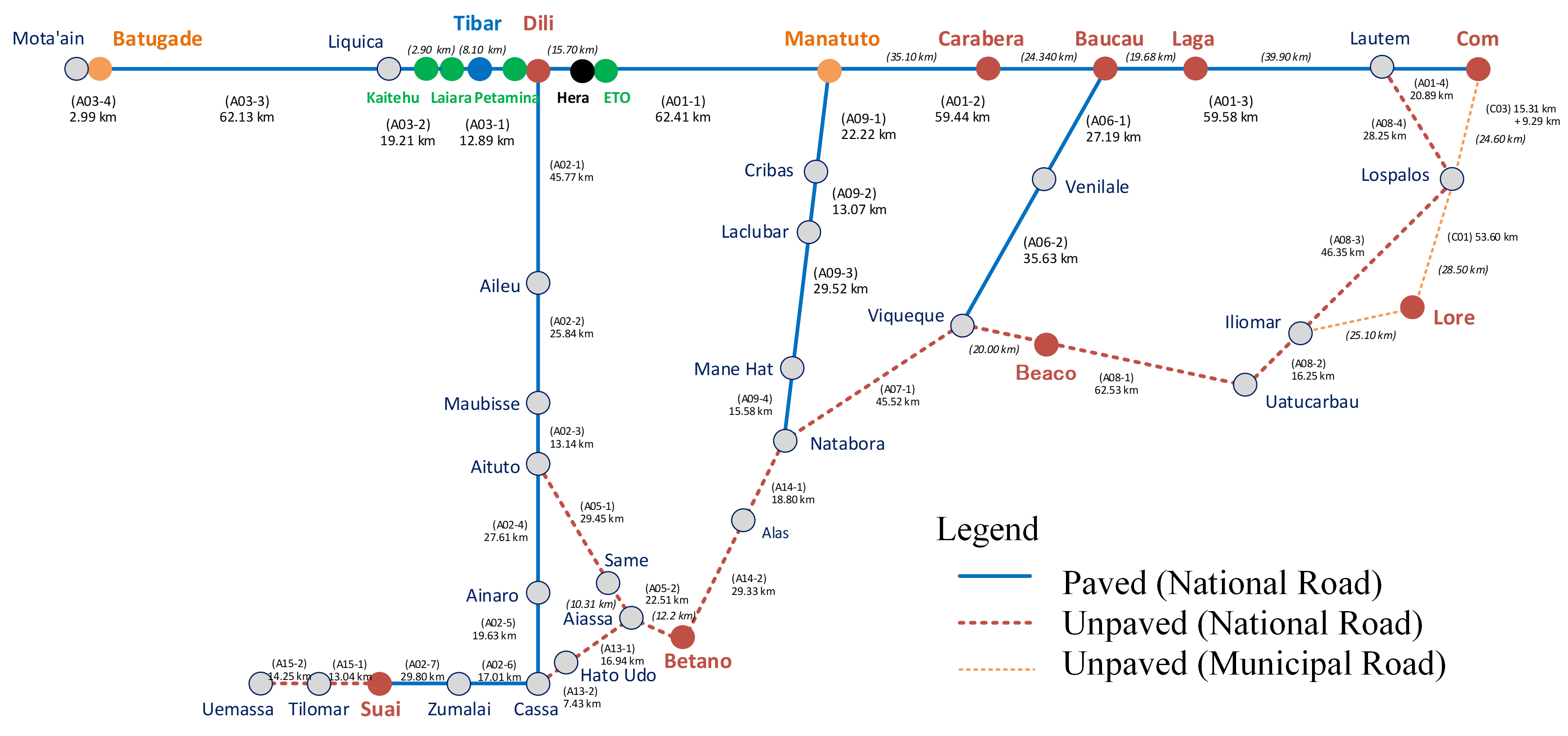
LONG TERM PLAN
We Proposed National Port Development
Proposed Implementation Schedule of Port Development Options
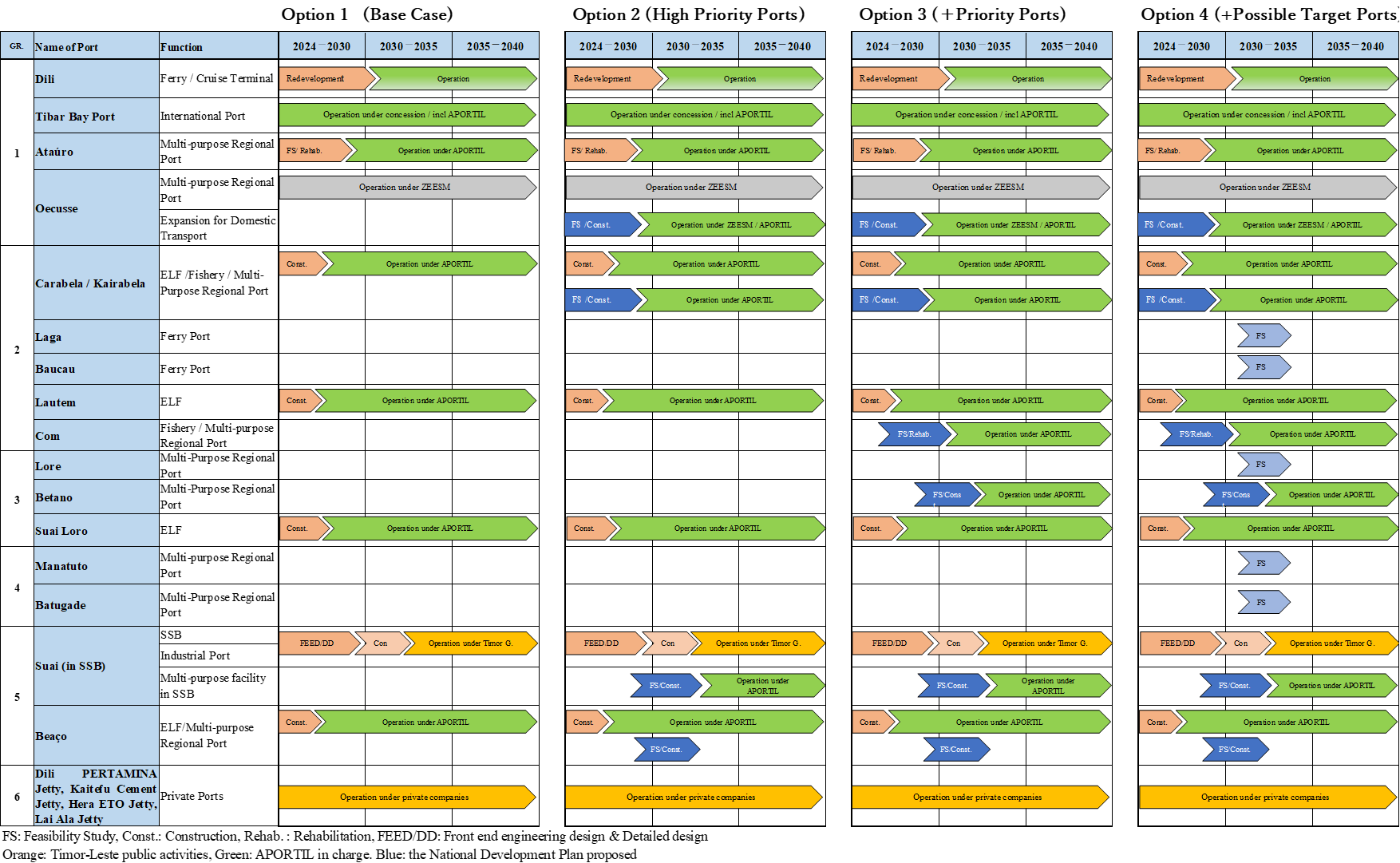
In this project, we proposed following Option 1 to 4 as port development plan through the target year 2040.
Option 1 is a zero option that does not develop ports except for the further plan that Timor-Leste is advancing.
Option 2: In addition to Option 1, develop Carabela, Beaco and Suai selected as high priority development ports.
Option 3: In addition to the high priority development ports, Betano Port which was selected as a priority development port, and Com Port which were selected as joint development sites with fishing ports, will be developed.
Option 4: This is a development plan other than the target port of Option 3. Batugade, Manatuto, Baucau and Lore are assumed as candidate ports, but it should be finalized after Option 3 is implemented.
We selected Option 2 as the most appropriate plan to implement.
National Port Development Plan Option 2 (2040)
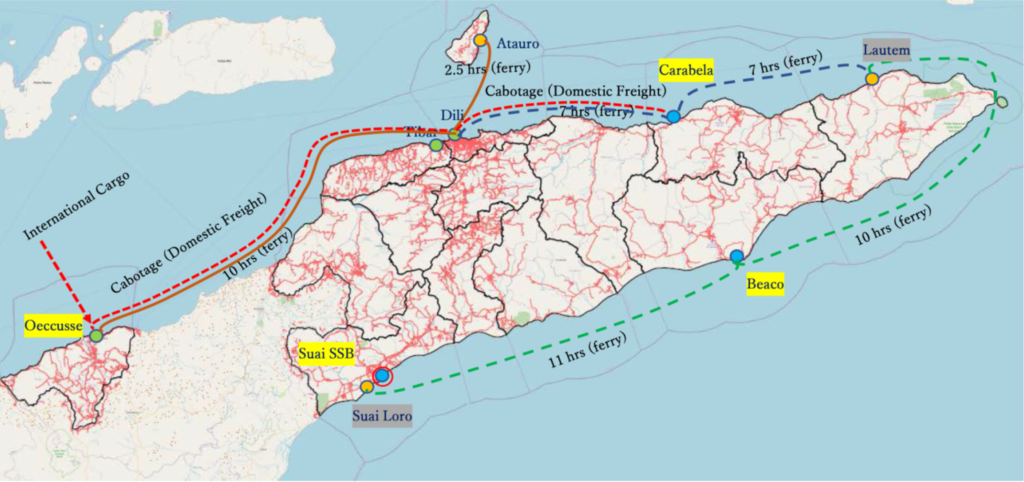
Option 2 is to develop Carabela, Beaco and Suai (within SSB) as high priority development ports.
On the northern coast, road development is progressing with a central focus on Dili, and land transport is dominant in the area from Batugade in the west to Baucau in the east, and Carabela is within that range. On the other hand, northern Manatuto municipality and Baucau municipality have growth potential in the fields of agro-industry (crop processing) and material for construction (mineral resources). Carabela has been classified in PNOT-TL as a Regional Port for trade and transport support.
The development of Carabela port is mostly prioritized to establish ferry network extension along the norther coast in combination with the improvement of Oecusse port to increase its effectiveness and to improve the handling conditions of Tibar Bay Port, especially break bulk.
On the southern coast, public port facility is proposed within the Suai Supply Base for the purpose of the south ferry transport.
Beaco is proposed to achieve as a Regional port in PNOT-TL for the purpose of supporting tourism, fisheries and transport.
MEDIUM-SHORT TERM PLAN
About High Priority Port Development of Carabela with co-development of Oecusse


Although the existing facilities of Carabela Port are fully deteriorated, it is selected as the candidate site for the project, where the necessary land has already been secured, no resettlement is required, and there is room for expansion.
The capacity of Oecusse Port is limited, therefore it requires enhancement and expansion.

Benefits from new port construction
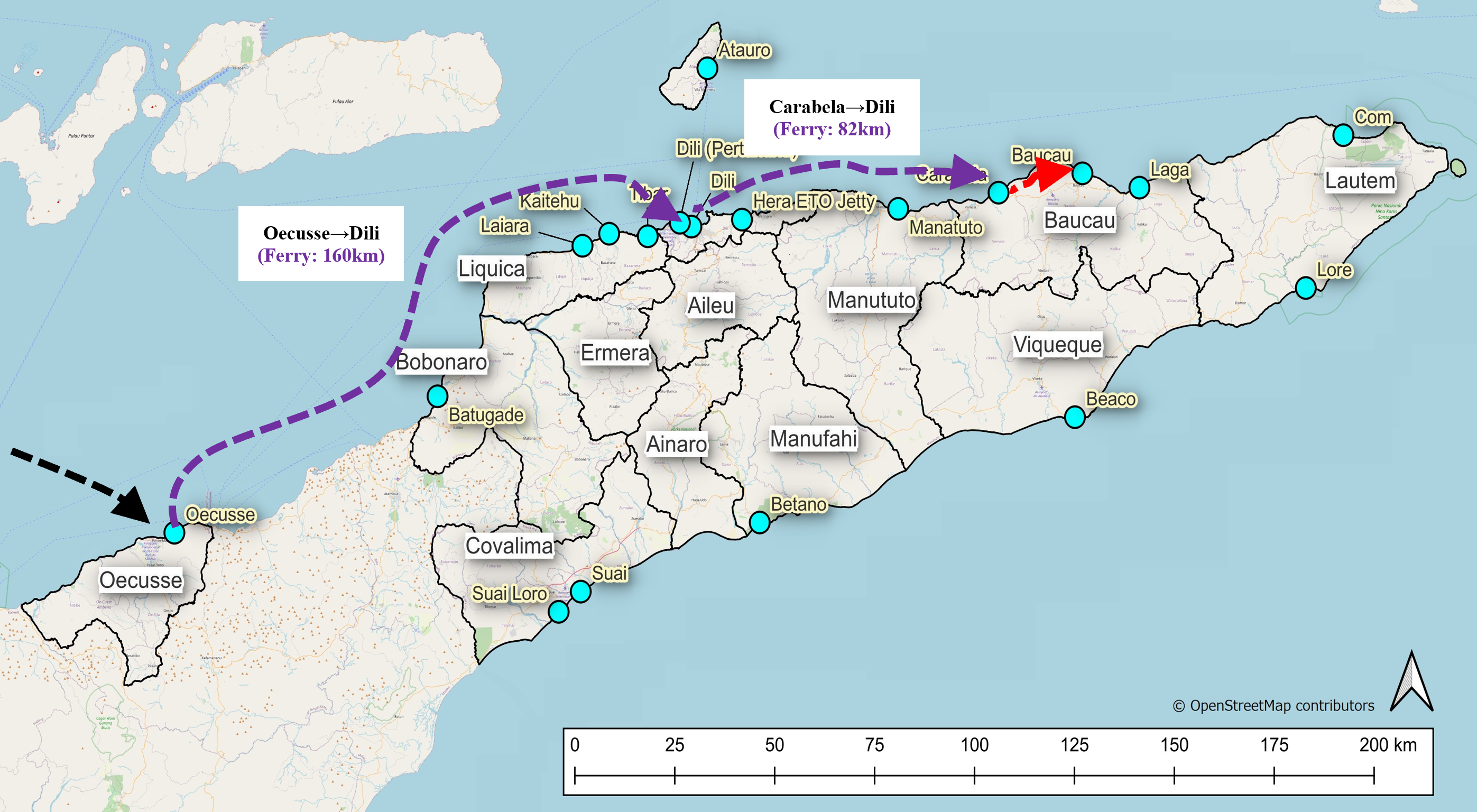
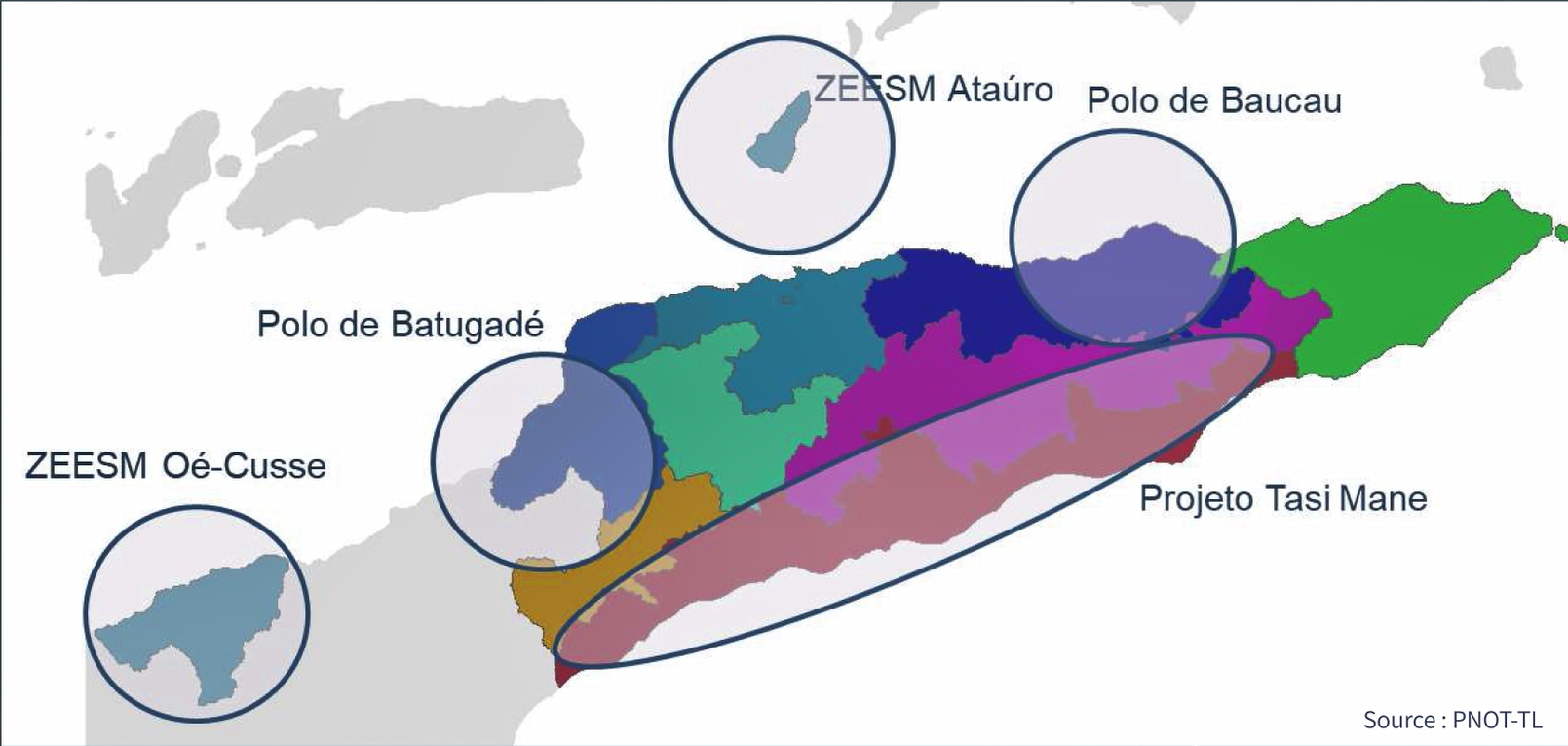
Once new development of Carabela port and expansion of Oecusse port is completed, new maritime transport route is expected between Oecusse, Dili and Carabela.
According to the PNOT-TL, the Baucau and Batugade areas as growth poles were selected for their characteristics that maximize return on investment i.e. Cement manufacturing company.
If there will be a demand of passenger and cargo between Dili and Carabela, private shipping companies may invest sea transportation referring to the interview with them.
If private shipping companies invest in the new maritime transport route, the principle of competition with APORTIL will come into play, and services can be expected to improve.
ACTION PLAN
APORTIL to be improved
APORTIL, I.P. (APORTIL) needs to play a major role in realizing the marine network in Timor-Leste, however, this became difficult after container handling operations were diverted to Tibar Bay port from Dili port which significantly reduced APORTIL’s income. Therefore, APORTIL needs to improve its financial condition so that it can be an engine for realizing the marine transportation network in Timor-Leste.
Three pillars that will serve as the foundation for improving the present situation are proposed.
The first one is port management. APAOTIL has to manage regional ports all over Timor-Leste specified in the proposed port development master plan.
The second one is the ferry boat operation. The APORTIL is operating ferry boats as a public service, However, its ferry operation is still causing significant losses. It needs to streamline the operation.
The third is the introduction of asset management in APORTIL. APORTIL should revitalize obsolete premises in Dili port and manage port facilities in the regional ports that are about to be constructed by the port development master plan.

Three Pillars for APORTIL’s improvement
The port development master plan presents phasing plans to realize the effective port management in Timor-Leste. Establishment of regional port management office in regional ports, set up a marketing unit in APORTIL and the other bottlenecks in shifting land to marine transportation and their solution measures are also prepared.
The asset management system should be introduced as an APORTIL’S new task. APORTIL should manage the Dili and regional ports in proper condition as a port facility. In addition, APORTIL should utilize their port premises as a landlord. A road map of streamlining the ferry boat operation is also indicated.
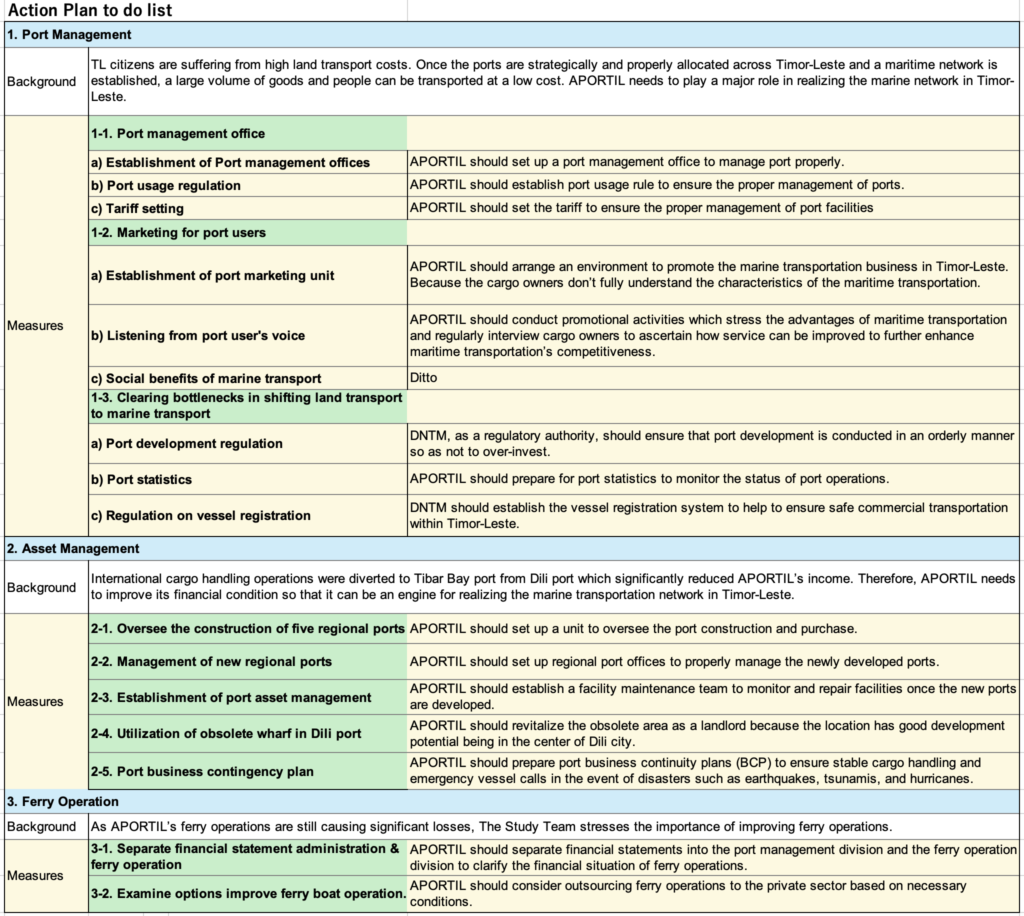
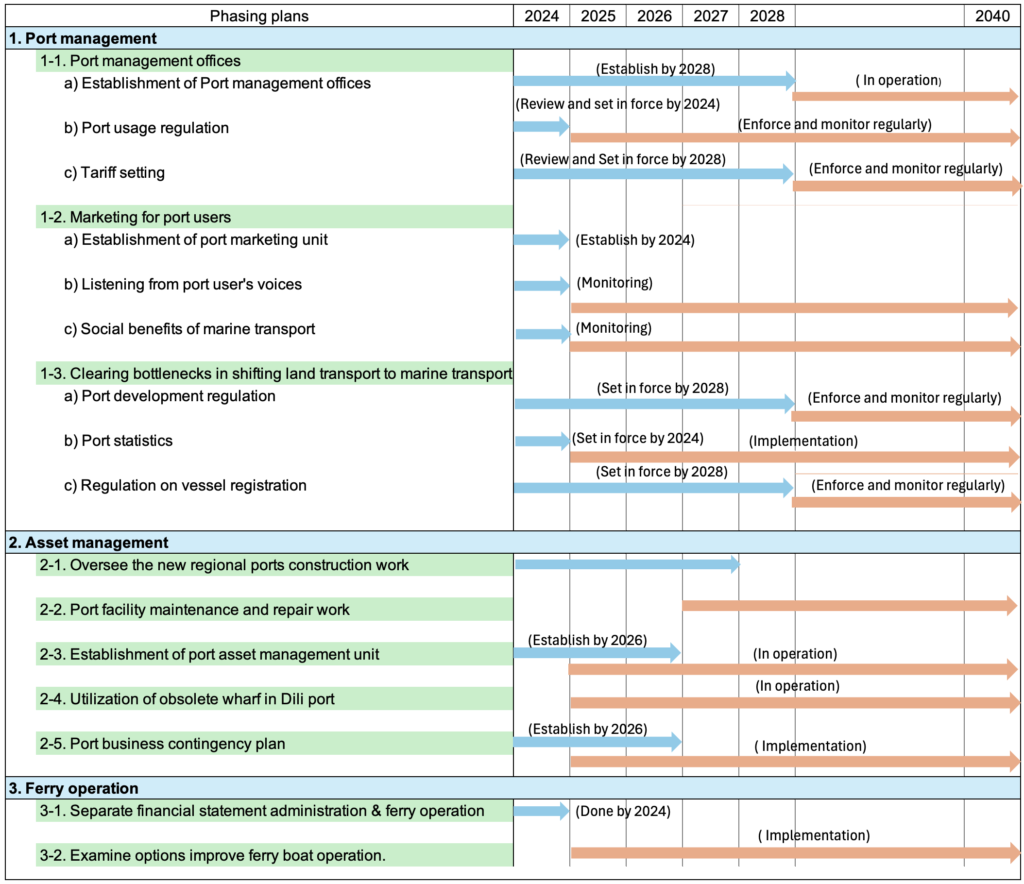
FUTURE
Perspective of Carabela Port

Developing and maintaining Timor-Leste’s ferry network will serve as a redundancy for domestic logistics in the event of a disaster, secure a route for transporting heavy goods that cannot pass through the mountainous areas in the central region, and serve as a domestic transport route for break bulk such as rice from Tibar Bay Port.
It can also function as a port of refuge for ships navigating the coast.
From a long-term perspective after 2040, depending on the turnaround in industrial promotion, it can be expanded to port facilities that handle international trade.
